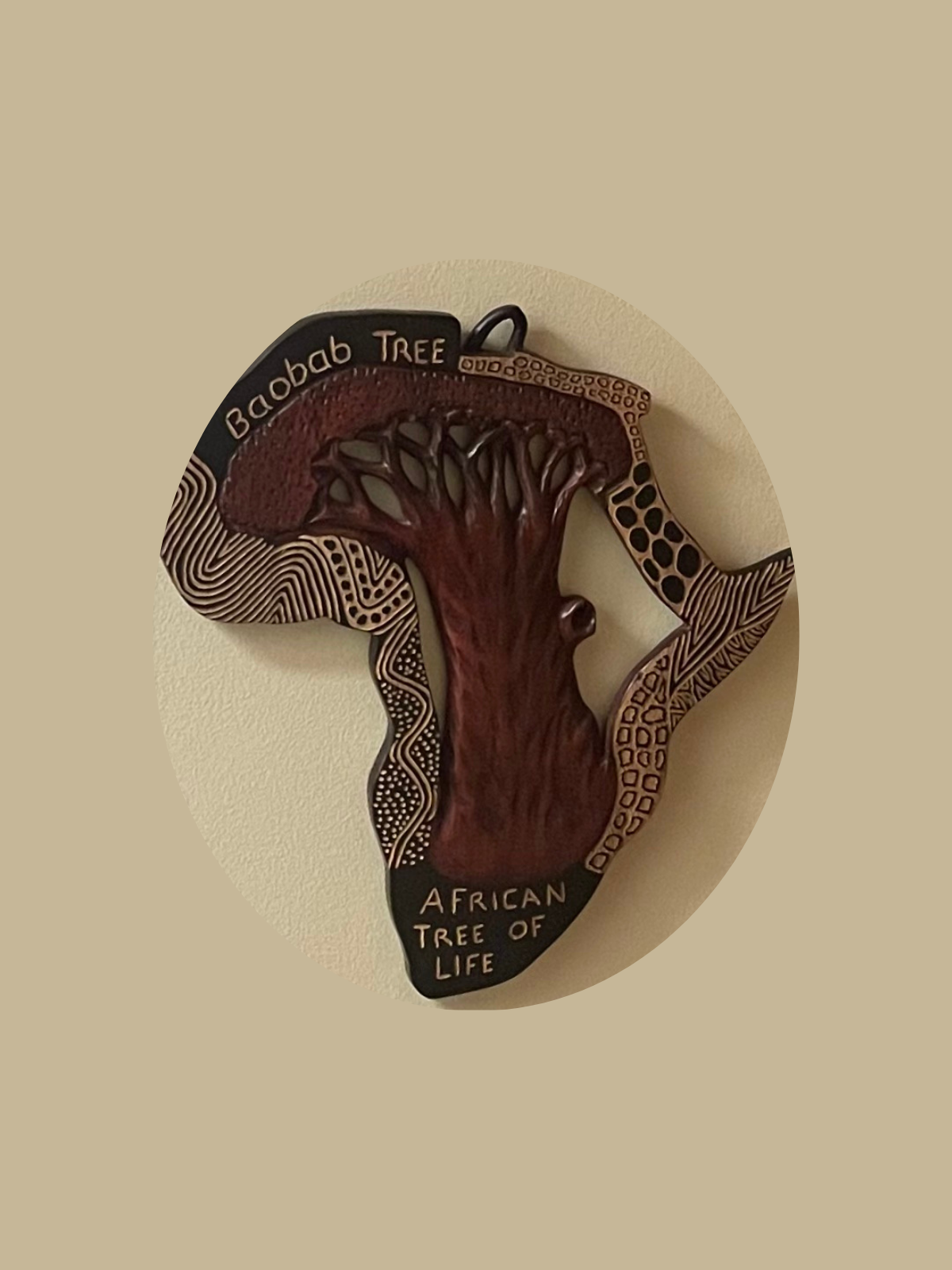Baobab Tree Art Piece
~ African tree of life
The magnificent Baobab Tree (Adansonia digitata) is an icon of the African continent. With bark and fruit offering over 300 life-sustaining uses, it is the root of many Indigenous remedies, traditions, and folklore. Hence its literal nickname, ‘The Tree of Life.
Reason Ndlovu is an artist born in Bulawayo the second largest city in Zimbabwe. During my travels to Zimbabwe in July of 2023, I met Reason in Victoria Falls where he commissioned the carvings of the Baobab Tree, the African tree of life, wrapped in the map of Africa.
The baobab’s ability to adapt to its environment is a powerful symbol of adaptability and transformation. In African art, the baobab tree often serves as a metaphor for the resilience of individuals and communities in the face of changing circumstances.
The majestic baobab tree is an icon of the African continent and lies at the heart of many traditional African remedies and folklore. The baobab is a prehistoric species which predates both mankind and the splitting of the continents over 200 million years ago.
It is believed that kings and elders would hold meetings under the Baobab tree, with the belief that the tree’s spirits would guide them in decision-making. In more modern times, the Baobab tree is commonly used as a venue for community meetings or even as a classroom.
The baobab is revered in Africa and Madagascar as a sacred and mystical tree. Baobabs can live for more than a thousand years and are perhaps among the oldest living things on the planet.
~ African tree of life
The magnificent Baobab Tree (Adansonia digitata) is an icon of the African continent. With bark and fruit offering over 300 life-sustaining uses, it is the root of many Indigenous remedies, traditions, and folklore. Hence its literal nickname, ‘The Tree of Life.
Reason Ndlovu is an artist born in Bulawayo the second largest city in Zimbabwe. During my travels to Zimbabwe in July of 2023, I met Reason in Victoria Falls where he commissioned the carvings of the Baobab Tree, the African tree of life, wrapped in the map of Africa.
The baobab’s ability to adapt to its environment is a powerful symbol of adaptability and transformation. In African art, the baobab tree often serves as a metaphor for the resilience of individuals and communities in the face of changing circumstances.
The majestic baobab tree is an icon of the African continent and lies at the heart of many traditional African remedies and folklore. The baobab is a prehistoric species which predates both mankind and the splitting of the continents over 200 million years ago.
It is believed that kings and elders would hold meetings under the Baobab tree, with the belief that the tree’s spirits would guide them in decision-making. In more modern times, the Baobab tree is commonly used as a venue for community meetings or even as a classroom.
The baobab is revered in Africa and Madagascar as a sacred and mystical tree. Baobabs can live for more than a thousand years and are perhaps among the oldest living things on the planet.
~ African tree of life
The magnificent Baobab Tree (Adansonia digitata) is an icon of the African continent. With bark and fruit offering over 300 life-sustaining uses, it is the root of many Indigenous remedies, traditions, and folklore. Hence its literal nickname, ‘The Tree of Life.
Reason Ndlovu is an artist born in Bulawayo the second largest city in Zimbabwe. During my travels to Zimbabwe in July of 2023, I met Reason in Victoria Falls where he commissioned the carvings of the Baobab Tree, the African tree of life, wrapped in the map of Africa.
The baobab’s ability to adapt to its environment is a powerful symbol of adaptability and transformation. In African art, the baobab tree often serves as a metaphor for the resilience of individuals and communities in the face of changing circumstances.
The majestic baobab tree is an icon of the African continent and lies at the heart of many traditional African remedies and folklore. The baobab is a prehistoric species which predates both mankind and the splitting of the continents over 200 million years ago.
It is believed that kings and elders would hold meetings under the Baobab tree, with the belief that the tree’s spirits would guide them in decision-making. In more modern times, the Baobab tree is commonly used as a venue for community meetings or even as a classroom.
The baobab is revered in Africa and Madagascar as a sacred and mystical tree. Baobabs can live for more than a thousand years and are perhaps among the oldest living things on the planet.


